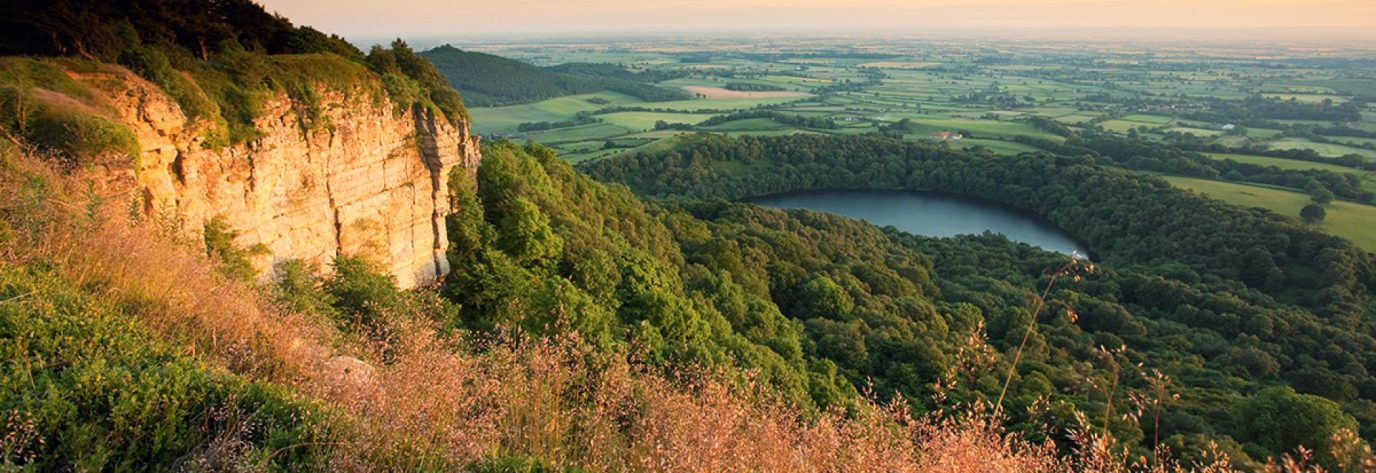If standard marathons are no longing challenging enough for you, and you’re looking for your next big event – why not try ultra-running? Ultra-running is not for the faint hearted, but this beginner’s guide from experience runners can help to get you started.
Many people consider marathons to be the pinnacle of long distance running. They view the 26.2-mile distance as the uppermost limit for their ability, and once it has been completed, the challenge has been surmounted and that’s the end of that. The end result is often either preparing for another shot next year to try and improve the time, or vowing to never attempt such a distance ever again – depending on how it went on the day.
Outside of this group, though, are hardy souls who take on something a bit meatier. For these individuals, 26 miles is little more than the first step on a route that can take them five or more times beyond that distance. After all, what’s a long distance race unless it takes days to complete, or is the kind of length a car couldn’t even go without needing a re-fuel? These individuals are The Ultrarunners.
So if marathons don’t hold the same appeal any more, or you’re finding them to not be the challenge they once seemed, it might be time to consider an ultra.

What is ultrarunning?
Put quite simply, an ultra is anything that goes beyond the traditional marathon distance. As such, it could be anything from 27 miles up to the 3,100-mile journey which – at the time of writing – iconic British ultrarunner William Sichel is currently undertaking. This event, the ‘Self-Transcendence 3,100-mile Race’, is the longest certified footrace on earth and one that the New York Times referred to as “The Mount Everest of ultramarathons”.
Speaking between connecting flights to New York, Sichel explained how he was looking to the event as a way of celebrating his 60th birthday, as well as a chance to break some more records.
“No one from England or Scotland has ever started and no one over 60 – from anywhere – has ever finished, so there’s quite a few firsts to go for,” he explained. Sichel is certainly no stranger to breaking records, as he currently holds 95 of them for the UK, world age-group or Scotland.
On undertaking the 3,100-mile challenge, he said: “This is my 20th year of ultras and 60th year of life so I wanted to mark it with something a bit special, that’s why I chose this event. You can’t go any further!”
These heroics needn’t foster the feeling that ultrarunning is an elite sport that no layman could ever dream of undertaking, though. As The Guardian’s Nick Mead explains, ultras are a way for people to push themselves to reach distances they are indeed capable of, but had never let themselves think as much.
After kicking a 40-a-day smoking habit and slimming down from 19 stone, Mead ran the 100km Norfolk Coastal Ultra. Even after completing numerous marathons, it was during the ultra when he experienced “the most intense runner’s high” of his life, something he’s “been chasing ever since.”

Mead said: “Anyone can run an ultra. A lot of it is mental. People think of running a marathon as the ultimate challenge – I used to think the same way myself – but when you run through 26.2 miles you realise you can go so much further.”
Much of people’s misplaced belief in their own abilities often comes down to them hitting “the wall”, that most famous of long-distance running experiences. This occurs when your body runs out of fuel, thereby leaving the individual feeling as though they cannot go on. Mead warned that, make no bones about it, ultrarunners will hit the wall – and maybe even three or four times in an event – but that each time you manage to come out the other side. Not only that, Mead adds, breaking through the wall isn’t just mentally stimulating but also brings about a new “wave of great running”. Seeing how often you hit the wall and then break through it should also illustrate as clearly as is possible just how much a runner may have underestimated their prior capabilities.
How far exactly simply depends upon the individual and their own goals, beliefs and training. Whatever the distance, ultrarunning is something that both Mead and Sichel say is within the realms of possibility for most people.
The experience
Ultrarunning will often call to mind images of lone individuals traipsing across the Pennines (in the driving wind and rain), with not a soul as far as the eye can see and 20 miles until the next rest stop. Whilst this may be true of some events, it’s certainly not the case for all – or even indeed most. In fact, there’s a vast array of ultra events in the calendar which each offer a rather different experience.
For example, some events (included within them Sichel’s 3,100 mile odyssey) take place on a small loop. This way, instead of running in a line from point-to-point, participants undertake numerous laps – which Sichel said only adds to the social experience.

“Circuit races may appear to be boring when you’re doing laps of parks or running tracks, but a tremendous social element builds up because you’re in constant contact with all the runners all the time,” he explained.
“If you’re on a ten mile loop, or even a 400-metre track, you’re seeing the leaders every few minutes. People chat to each other and give encouragement. I’ve known people expect to hate it and be bored to tears within the first half hour, but they’ve literally loved them and said they’ve never had such a good experience – or such a social experience – in any race of any kind.”
How do you train?
The most common ultra distances are 50 miles, 100km (62 miles) and 100 miles. Even for those starting themselves off gently, the idea of going a marathon distance, only to then be faced with the prospect of carrying on for almost the same amount again, is a rather intimidating one. Thankfully, there are plenty of resources widely available online, but Sichel notes that they might be best taken with a pinch of salt.
Some training plans, he noted, don’t manage to reach the eventual distance – whilst some don’t even get close. This seems to foster the idea that 50, 62 or 100 miles is a reverential distance and something which should only be undertaken on the day of the race. He argued that more important was the need for a runner to get the distance out of their system, especially if it’s one that holds a great deal of fear.
“If the distance is a concern, go out and walk 50 miles,” he said. “Once you’ve done it the fear is taken out.”
Mead added that training on tired legs is key to preparing for such a long race. His schedule typically involves a long run on Saturday, followed by another on the Sunday. Instead of using the next day as one of rest, running on tired legs will train the body and get it used to doing exactly that, which will only be beneficial come race day.
The “big secret”
Ok, maybe it’s not a fastidiously held secret, but Sichel spoke of something that ultrarunners “never mention”; walking.
Runners may set themselves the challenge of getting all the way around a marathon course without slowing down to a walk – or stopping altogether – but this is something Sichel said is certainly not the case in the world of ultras.
Instead, he advocated the ‘run-walk approach’, which was once known as ‘Scout Pace’, thanks to the Scout movement finding that boys could cover much longer distances if they varied between running and walking. By alternating between the two, racers can improve their distances pretty much straight away.

“If you’re a runner now but you did a run-walk tomorrow morning, you could double your distance immediately,” he asserted. “When I set world records I wasn’t running all the time.”
The reason for its success is that walking enables the body to go through a significant recovery period. Runners should be warned, however, that this technique isn’t something to be deployed after a few hours of running once they have grown tired. In this instance, it would make only for a “death march to the finish line”. Instead, starting a run-walk system early on will have a dramatic effect on how far a person can comfortably go.
With regard to timings, Sichel said it could be whatever the runner feels most comfortable with, whether it’s five minutes, ten or slightly more. Having a watch that sets off beeps at certain intervals can also make the process easier and keep reminders accurate.
One absolute must was for runners to practice this approach in training. Once you’ve got used to it, though, the technique can be used in races to great effect.
“If you’re a runner now but you did a run-walk tomorrow morning, you could double your distance immediately,” he asserted. “When I set world records I wasn’t running all the time.”William Sichel

What events are out there?
Anyone thinking of trying out ultrarunning has rather impeccable timing, as this is widely being viewed as the sport’s golden era – at least in terms of participation.
Back in 1994, when Sichel was taking his first steps into ultrarunning, there were just a handful of events available across all surfaces. Now, even the most cursory glances at a running calendar should show that the events are running more into the hundreds. Not only that, there’s almost an embarrassment of riches on offer, with point-to-point and circuit events taking place on roads, trails and tracks.
Another type of event which almost turns the sport on its head is that of fixed time, not fixed distance. During these, runners are tasked with an event that may go on for six hours, not 60 miles. As Mead put it: “They are particularly tough mentally because, normally, the faster you run the sooner you finish – but in a time-limited race, the faster you run the more it hurts.”
These can go on for any length of time, but by far the most common are six, 12, 24 or 48-hour events. Some super-intense iterations can even go on for six days – albeit with breaks in between for sleeping.
On that subject, sleep may not necessarily be on the cards for some ultrarunners. Noting one of his most memorable events, Mead recalled the Spine Race, which takes place in January, resplendent in its coldness, bleakness and shortness of day. The 268-mile event takes in the Pennine Way from Edale in Derbyshire to Kirk Yetholm in the Scottish borders. As it’s a single-stage race the clock never stops. This punishing challenge got the better of Mead after he racked up a still-impressive 100 miles. Unarguably more impressive (or mad, depending on your stance) was that the winner of this exact race completed it in four days, 15 hours. In this time he slept for just five hours.I want people to enjoy’
Whether ultrarunning is something you’ve been wanting to try for a while – or the next challenge after a marathon – Sichel explained it should be an enjoyable process. Some of what’s been noted above may strike fear into your very core, but some may enthuse you to strap on the trainers and get out. Sichel falls very much into the latter camp and would encourage anyone to follow in his many millions of footsteps.
“I always want people to enjoy the ultras and not need treatment or end up in intensive care!” he said. “Most people will enjoy it. My advice to people considering it would be to not keep putting it off.
“If you want to do one, do it.”William Sichel





